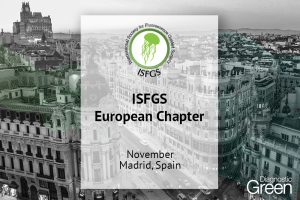Background: Intraoperative perfusion assessment with indocyanine green fluorescence angiography (ICG-FA) may reduce postoperative anastomotic leakage rates after esophagectomy with gastric conduit reconstruction. This study evaluated quantitative parameters derived from fluorescence time curves to determine a threshold for adequate perfusion and predict postoperative anastomotic complications. After intravenous bolus injection of 0.05-mg/kg ICG, fluorescence intensity was registered over time by PINPOINT camera (Stryker, USA). Fluorescent angiograms were quantitatively analyzed at a region of interest of 1 cm diameter at the anastomotic site on the conduit using tailor-made software. Extracted fluorescence parameters were both inflow (T0, Tmax, Fmax, slope, Time-to-peak) as outflow parameters (T90% and T80%). Anastomotic complications including anastomotic leakage (AL) and strictures were documented. Fluorescence parameters in patients with AL were compared to those without AL.
Results: One hundred and three patients (81 male, 65.7 ± 9.9 years) were included, the majority of whom (88%) underwent an Ivor Lewis procedure. AL occurred in 19% of patients (n = 20/103). Both time to peak as Tmax were significantly longer for the AL group in comparison to the non-AL group (39 s vs. 26 s, p = 0.04 and 65 vs. 51 s, p = 0.03, respectively). Slope was 1.0 (IQR 0.3-2.5) and 1.7 (IQR 1.0-3.0) for the AL and non-AL group (p = 0.11). Outflow was longer in the AL group, although not significantly, T90% 30 versus 15 s, respectively, p = 0.20). Univariate analysis indicated that Tmax might be predictive for AL, although not reaching significance (p = 0.10, area under the curve 0.71) and a cut-off value of 97 s was derived, with a specificity of 92%. Conclusion: This study demonstrated quantitative parameters and identified a fluorescent threshold which could be used for intraoperative decision-making and to identify high-risk patients for anastomotic leakage during esophagectomy with gastric conduit reconstruction. A significant predictive value remains to be determined in future studies.




